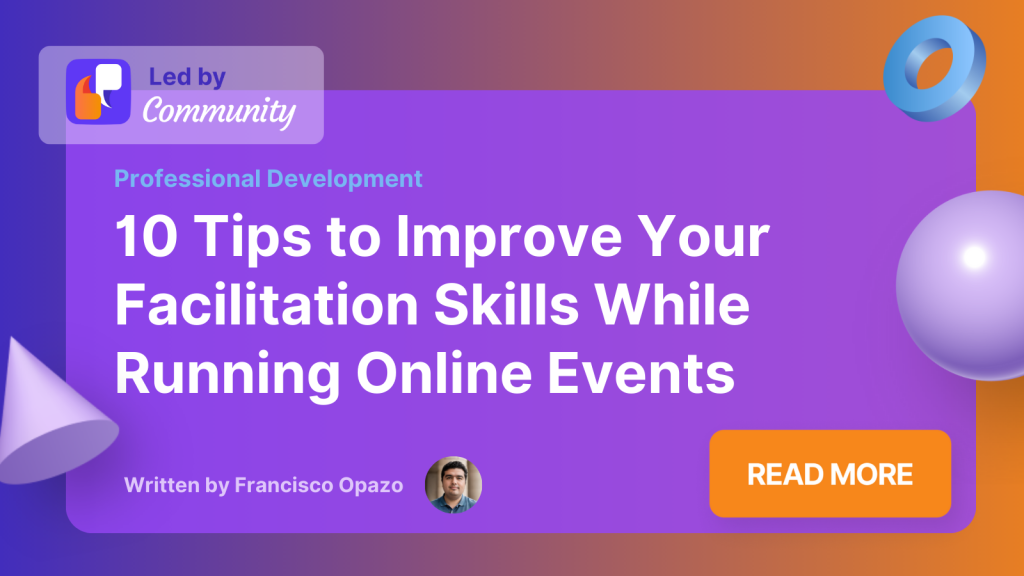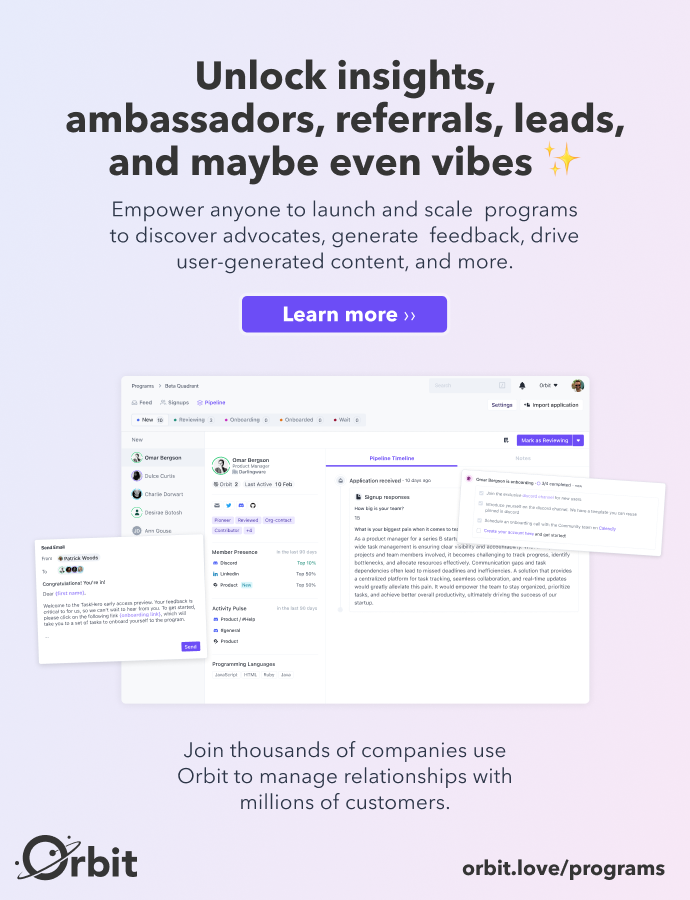Virtual high five: you’ve been chosen to host the next big online event! Whether it’s a team meeting, a webinar, or an interactive workshop, running an online gathering can feel like navigating a digital maze. Don’t fret; we’ve got you covered. Gone are the days when online events were monotonous and impersonal. You can turn any virtual gathering into a lively, engaging experience with the right tools and strategies. From understanding your crowd to reflecting on your success, here are 10 tips to boost your facilitation skills. Ready to dive in? Your audience awaits!
1. Understand Your Audience

Identifying the Needs and Expectations of Participants
Your online event should be all about the attendees. Before planning, take the time to figure out who will be in the virtual room. Are they new to the subject or seasoned experts? What are their main interests or concerns related to the event’s topic? Gathering this information beforehand (through surveys, emails, or social media) helps you align the content with what the audience wants. It’s like cooking a meal – you must know what your guests like to eat!
Tailoring Content and Engagement Strategies
Once you know what your audience is hungry for, it’s time to serve it up in a way that resonates. This doesn’t mean just dumping information on them. Make it interactive and lively. Use real-world examples they can relate to, sprinkle in humour if appropriate, or even include small interactive tasks. Think of how you can break up the content into bite-sized pieces that are easy to digest. You can use tools like polls, quizzes, or breakout rooms to keep them engaged. Remember, it’s not just what you say; it’s how you say it!
In a nutshell, understanding your audience is about empathy and customization. It’s about putting yourself in their shoes and creating an online event experience that feels personal, engaging, and valuable to them. By knowing who’s on the other side of the screen and adapting your approach accordingly, you turn a generic online gathering into an event tailored for them. It’s like having a virtual handshake with each participant, saying, “I see you, and this is for you.”
It’s like having a virtual handshake with each participant, saying, “I see you, and this is for you.
2. Set Clear Objectives and Agenda

Crafting an Agenda That’s Both Flexible and Time-Conscious
It’s crucial to outline the roadmap for your event, but don’t make it so rigid that it can’t bend a little. Life happens, especially in a virtual setting. Create an agenda including key topics, breaks, and interactive moments, but be ready to adapt. Your audience will appreciate a well-paced flow that also leaves room for spontaneity. Think of it like a playlist for a road trip – you’ve got your favourite tunes lined up, but you’re free to skip or repeat songs as the mood strikes!
Communicating Objectives Upfront
What’s the big goal of this online gathering? Whether educating about a new product, brainstorming on a project, or connecting community members, let everyone know immediately. It sets the tone and gives participants a clear idea of what to expect. It’s like giving them the “why” behind the event. Doing this makes everyone feel part of the journey and keeps them aligned with the purpose. Imagine inviting friends to a party without telling them it’s a costume party – confusion and mismatched expectations can spoil the fun!
Setting clear objectives and crafting a well-thought-out but flexible agenda turns your online event from a confusing jumble into a harmonious symphony. It quickly guides participants through the virtual space, keeps them engaged, and ensures you achieve the goals you set out to reach. Remember, a successful online event is like a well-choreographed dance; everyone knows the steps, but there’s still room for improvisation!
3. Choose the Right Technology and Tools

Selecting Platforms and Tools that Match Your Needs
Technology can be your best friend or your worst enemy when hosting an online event. Pick platforms that suit the nature of your event. A platform with robust presentation tools is best if it’s a formal webinar. Something more user-friendly for a casual community gathering might be the way to go. Don’t forget to test everything before the big day. It’s like choosing the right vehicle for a road trip; you wouldn’t take a sports car into the mountains!
Well, it is here when we want to shout out to our friends at Gradual, our selection to run The Hub for Community Professionals.
Ensuring Accessibility and User-Friendliness
Not everyone’s a tech wizard, and that’s okay! When selecting tools, consider the technical skills of your participants. Guide how to use the platform, perhaps through a quick tutorial at the beginning or a handy guide emailed beforehand. Ensure your selected technology is accessible to everyone, including those with disabilities. Include options like subtitles or different viewing modes if possible. Think of it as hosting a party at your house – you’d guide your guests and make them feel at home.
Choosing the right technology and tools is crucial for setting the stage for a successful online event. It’s not just about flashy features; it’s about matching the tech with your audience’s needs, abilities, and comfort levels. By thoughtfully selecting and preparing your virtual ‘venue’, you create a smooth and engaging experience for everyone involved. It’s like laying out a welcome mat at the digital doorway, inviting participants in quickly and confidently.
4. Create an Engaging Virtual Environment

Utilizing Visual Aids and Interactive Elements
Keep your participants engaged by mixing up the content presentation. Incorporate visual aids like slides, videos, or images to complement your speech. Consider adding interactive elements, such as polls or clickable links, to encourage participants to be more than passive listeners. These tools can add interest and depth to the presentation, enhancing the virtual experience.
We cannot recommend Butter as one of the top performers regarding interactive sessions. They got plenty of tools available to boost the attendee’s participation.
Encouraging Participation Through Polls and Q&A Sessions
Interactive segments like polls or Q&A sessions break the monotony and allow participants to share their thoughts and opinions. Including a live survey can give you immediate feedback, while a Q&A session can facilitate deeper discussion and clarification. Encourage participants to ask questions, comment, or even upvote queries they find most pertinent. The goal is to create a two-way communication channel that fosters a more vibrant and connected virtual gathering.
Creating an engaging virtual environment is more than sharing information; it fosters interaction and connection. By thoughtfully planning visual aids and interactive elements, you can turn a standard online event into a dynamic and collaborative experience. Whether it’s a meeting, a workshop, or a webinar, these strategies can make your virtual event more lively and memorable.
5. Facilitate Effective Communication and Collaboration

Encourage Open Communication
In a virtual setting, some participants may feel hesitant to speak up. Make it clear from the beginning that questions, thoughts, and opinions are welcome. Provide multiple channels for communication, such as chat, voice, or even anonymous questions. Regularly invite feedback and pause to address questions or comments. Creating a safe space for open communication helps foster a more collaborative and engaging event.
Promote Collaboration Through Breakout Rooms or Team Activities
Online events don’t have to be one-sided presentations. Consider using breakout rooms or team activities to encourage collaboration among participants. Breakout rooms allow smaller groups to discuss specific topics or work on shared tasks, bringing a sense of intimacy and teamwork to the virtual space. Organize interactive activities that promote teamwork, such as brainstorming sessions or problem-solving challenges. These approaches can make participants feel more connected and involved, turning a potentially static event into a dynamic collaboration.
6. Prepare for Technical Glitches

Have a Backup Plan
Technical issues are almost inevitable in virtual events. Having a backup plan can save the day. Prepare alternative content-sharing methods, like downloading slides or other essential materials. Make sure you quickly reconnect if you’re booted off the platform.
Designate a Tech Support Person
If possible, designate someone to manage the technical aspects of the event. This allows you to focus on delivering content and interacting with the audience while someone else troubleshoots issues that may arise.
7. Maintain an Interactive Pace

Keep Sessions Short and Focused
Attention spans can wane during online events. Stick to a schedule incorporating short, focused segments punctuated by breaks or interactive activities to keep the audience engaged.
Implement Regular Check-ins
Check-in with your audience throughout the event to ensure they’re still engaged. This could be as simple as asking a question, conducting a quick poll, or pausing for a small discussion.
8. Be Adaptable
Read the Virtual Room
Keep an eye on chat comments and participants’ body language (if visible) to gauge interest and adjust your approach as needed.
Be Prepared to Pivot
Have extra material ready in case you go through your main content more quickly than anticipated, but also be ready to skip sections if certain parts are taking longer than expected or if the audience wants to delve deeper into a specific topic.
9. Close With a Strong Summary and Call to Action

Like every great story, engaging events have a beginning, a middle, and an end. The end is often the most memorable part of a community experience. Yet, the problem is that many hosts neglect this crucial element, leaving participants feeling unsettled or unfulfilled. A well-executed closing serves several vital functions: it allows everyone to be heard one last time, provides closure, and can elevate the event’s emotional tone as it concludes.
Recap Main Points
Begin your closing by summarizing the key topics, questions, or themes discussed during the event. This helps cement the value of the event and makes it easier for participants to remember the main takeaways.
Issue a Call to Action
Guide your audience toward the next step. Whether signing up for a newsletter, participating in a follow-up event, or completing a post-event survey, a call to action provides a clear direction and keeps the momentum going.
Three Effective Closing Ideas:
- Chat Prompt for Final Insights: Before you wrap up, provide a prompt in the chat asking participants to share one insight or takeaway from the event. This creates a space for reflection and allows voices to be heard one last time.
- Share a Closing Quote: Elevate the emotional tone by sharing a quote encapsulating your event’s theme or main message. It can serve as a poignant note to end on, leaving participants inspired as they exit.
- Audio-Visual Farewell: Turn on your microphone—and encourage participants to turn on theirs—to say a heartfelt goodbye. Pair it with waving to the camera to create a sense of community and warmth as you conclude.
10. Evaluate and Reflect

Gather Feedback
Use post-event surveys or feedback forms to collect impressions from participants. This helps you understand what went well and what needs improvement.
Review Metrics and Analytics
Examine attendance rates, participation levels, and other metrics to gauge the event’s success and plan for future events.







